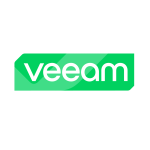What is our primary use case?
We've got three main use cases. The most common one now is ransomware protection, specifically one-touch recovery. If a customer is affected by ransomware, they can easily recover just the affected files with Rubrik, without having to do a full data backup recovery.
Rubrik has built-in intelligence to know what's been affected, allowing for quick recovery and minimal downtime.
The second use case is for cloud migrations. You can back up your data on-prem and then restore it to another location, streamlining your migrations. It is a clever way of using backups.
How has it helped my organization?
There's no need for human intervention to kick off the automation if you create workflows in Rubrik that can be followed in the event of a backup or compromise. For example, you can define backup policies and retention policies.
You can automate tiering. If something is older than, like, 90 days on the backup, it can automatically move to cheaper disk. That's another key feature of the automation process. Rubrik does a lot of incremental backups, eliminating the need for those manual large backups all the time.
The main reason our customers are buying Rubrik is the automated intelligent data management. It analyzes storage usage and automatically optimizes compression, data location, and deduplication. This part of the automation process is very valuable because it eliminates the need for a human to manually optimize storage.
What is most valuable?
The automation of policies is powerful. It automates the backup and recovery process, reducing manual human errors.
Also, it's a single platform for managing backup, replication, and recovery, eliminating the need for different products. The one-touch recovery reduces downtime and accelerates business continuity.
Additionally, people really like the global search, which allows for granular recoveries. Regarding security, Rubrik is immutable by default. Many other backup technologies rely on the storage they live on to be immutable, which can be a problem if someone gains access and turns it off. Rubrik's immutability is by default.
What needs improvement?
There is room for improvement in the cost. Make it cheaper. Everyone knows what you're getting with Rubrik. It's expensive for a reason, but it is one of the better ones.
Sometimes, when we talk to customers, we explain the amazing features, cost savings, and efficiencies. But when we give them the price, the people in procurement who don't understand the technology just look at the price and want it lower.
I try to explain that it's saving them money and paying for itself. If something happens and the company can't work for a week, they'll lose millions. Then, they're complaining about a few hundred thousand pounds. This avoids brand reputation damage too. If you get caught in the news saying you've had ransomware, it could affect your company.
In future releases, Rubril could open up more SaaS protection for products like Salesforce or ServiceNow. I know Rubrik is doing something with SAP, but there's competition in that space.
Buyer's Guide
Rubrik
December 2025
Learn what your peers think about Rubrik. Get advice and tips from experienced pros sharing their opinions. Updated: December 2025.
879,371 professionals have used our research since 2012.
For how long have I used the solution?
I started in 2014, so it's been almost ten years.
What do I think about the stability of the solution?
I would rate the stability a ten out of ten. It is very stable.
What do I think about the scalability of the solution?
It's very scalable, which was the reason it was invented because traditional backup wasn't scalable.
I would rate the scalability a ten out of ten.
We work with companies of all sizes, from 750 end users to 10,000 users.
We've been working with Rubrik for many years. For now, we have between 20 and 50 customers.
How are customer service and support?
The times I've worked with them, the customer service and support were just a little bit slow, but they're still very clever.
So, the customer service and support could be a bit faster.
How would you rate customer service and support?
Which solution did I use previously and why did I switch?
Commvault, Veritas, and Zerto are the main ones. As a reseller, we work with a lot of competitive products, including Veeam and Rubrik. Lately, there have been opportunities for both.
However, customers are often already using one or the other, so it is difficult to switch them to Veritas.
The competitive edge lies in terms of the automation. Traditional backup solutions, like Veritas, involve a lot of manual processes. Rubrik's automation overcomes many of the manual issues and testing challenges.
Security and compliance is another area. Rubrik's reporting and analytics help overcome challenges related to backup reporting, especially for compliance with regulations like GDPR.
Rapid recovery is a big challenge. Rubrik's One-Touch Recovery helps address this. Using backup as a migration tool can also help overcome challenges when moving to a hybrid cloud.
Finally, storage management. Customers buy a lot of storage, and it's hard to manage efficiently. Rubrik's intelligent data management platform can help overcome this challenge.
How was the initial setup?
The deployment is actually very straightforward, probably one of the easiest data protection platforms to roll out. They've really reinvented the way backup is done. The founders came out of Google, the guys who made Rubrik.
Deployment model:
It's primarily on-prem, but recently, people have been interested in the cloud protection module.
Deployment time:
Rubrik is easy to deploy, you should be up and running within a few weeks after testing. So, it can start from a few days to a couple of weeks.
For a small company, the deployment could be just a few days. For a bigger customer, it could be a couple of weeks, depending on their requirements. But you can be up and running quickly, then it's just a matter of configuring it to their specific needs.
What about the implementation team?
We work in the resell division, so get measured on selling licenses, but the rest of Accenture is measured on professional services. They would handle the implementation, support, troubleshooting, and upgrading.
Accenture has 750,000 people divided into client teams. Each client has a group of sales or technical teams, and the technical teams are divided into security, infrastructure, compliance, and risk. It's difficult to say how many are in the technical teams, but each client has one, and we have 250 key clients around the world. So, tens of thousands of people.
What was our ROI?
The main benefit is cost savings. Rubrik is expensive, but due to its data management capabilities, customers can save a lot by reducing hardware and storage. The automation features also reduce manual labor from the operations team.
One-touch recovery reduces lost revenue by recovering quicker. Automation improves staff productivity and reduces costly human error. So, overall, there's reduced risk, no business disruption, and a faster time to value because it's easy to implement, and much of it is automated.
What's my experience with pricing, setup cost, and licensing?
It is a more expensive solution, but people need to know what they're paying for. On a scale of one to ten, where one is extremely expensive, and ten is very cheap, I would rate it a four.
Which other solutions did I evaluate?
What other advice do I have?
Overall, I would rate the product I a ten out of ten. I love the product!
Disclosure: My company has a business relationship with this vendor other than being a customer.






















